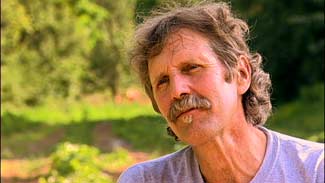Text written by SARE
This is the second in a series of “how-to” videos showcasing the knowledge and creativity of farmers who are have worked with the Sustainable Agriculture Research and Education program (SARE)—either as grant recipients, cooperators or leaders. In the first video, Jeanne Carver (Imperial Stock Ranch, Eastern Oregon) described her ranch’s approach to value-added marketing. Now we turn to the Midwest where Steven Schwen of Earthen Path Organic Farm (Lake City, Minnesota) has built an innovative greenhouse that allows him to extend his growing season while reducing energy costs. SARE’s Farmer-Rancher Grants program provided critical assistance for Schwen in the beginning phases of his project.
At Minnesota’s latitude, farmers who can extend their growing season have a distinct advantage in the marketplace: By offering a product outside the “normal” growing season, they can receive a higher price. That’s what Schwen has done with his greenhouse vegetable production, starting earlier in the year with seedlings of warm-season vegetables (tomatoes, cucumbers, basil and peppers), and continuing production into the fall and even the winter months when he grows cold-tolerant crops such as salad mix, cilantro, scallions and carrots. Season extension is a common enough practice, but what makes Schwen’s operation so unique is the added innovation of thermal banking, which significantly reduces the energy costs of running a greenhouse for cold-season production. Schwen’s simple description of thermal banking is that it’s like a savings account: Instead of money, you save (or store) energy for future use. In this case we are talking about the heat that accumulates in a greenhouse during the daytime, especially on sunny days.
As you watch the video, you’ll appreciate the level of detail Schwen provides about the greenhouse’s design and construction. In addition, he has made the design drawings available for reference (PDF), and viewers are encouraged to download those and follow along as Schwen talks about the construction process. Design drawings. Note that in this set-up, it’s more about what you don’t see underground, than the greenhouse structure itself!
Schwen views this technology as a key component of his farming operation, particularly in this time of global climate change and energy insecurity. He feels this project moves him closer to his ultimate goals of energy independence and self-sufficiency.
The Sustainable Agriculture Research and Education (SARE) program’s mission is to advance—to the whole of American agriculture—innovations that improve profitability, stewardship and quality of life by investing in groundbreaking research and education. SARE is proud of its connections to farming communities across the country and encourages those who wish to learn more to visit SARE. SARE is funded by the National Institute of Food and Agriculture, USDA.
Most of the videos featured on Cooking Up a Story were produced, filmed, and edited by Rebecca Gerendasy. Fred Gerendasy contributed as a writer to many of the posts and occasionally as the interviewer. Visit Rebecca Gerendasy Clay – Art and Fred Gerendasy Photography to see their current work.


